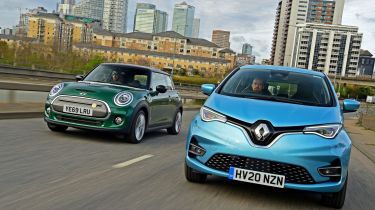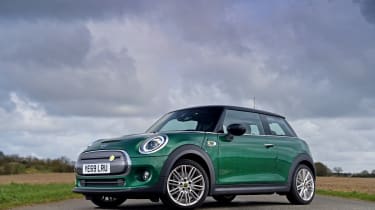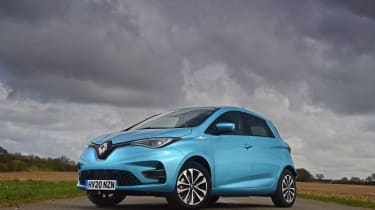Twin test: MINI Electric vs Renault ZOE
MINI's new kid on the small electric-car block takes on our 2020 Car of the Year, the refreshed Renault ZOE

Small electric cars make a lot of sense as a replacement for their internal-combustion counterparts: perfectly suited to urban motoring, but still capable of longer trips in comfort, all with the benefit of much lower running costs and zero local emissions.
The Renault ZOE was one of the first of the breed when it arrived in its original form in 2012. Since then, the French electric supermini has been improved gradually with more powerful electric motors and larger batteries. The latest model, introduced in 2019, uses a 52kWh battery for an impressive 238 miles of range. Buyers can pick from two electric motors and rapid-charging functionality is optional.
As a stylish supermini aimed at those living in towns and cities, the MINI Hatchback was a prime candidate for electrification. The MINI Electric has arrived relatively late to the game, but its credentials are strong – parent company BMW has an impressive record with its i3.
Powered by a 28.9kWh battery and a 181bhp electric motor, the MINI Electric can’t match the ZOE’s impressive range (144 vs 238 miles) but is cheaper to buy in its entry-level form – although the Renault gets more kit as standard and is cheaper in its highest spec, as tested here.
MINI Electric

Pros: Fun to drive, great quality, comfortable
Cons: Short range, tight rear seats, limited boot space
Renault ZOE

Pros: Practical interior, impressive range, good standard equipment
Cons: Not as fun to drive, lacks badge appeal, slightly more expensive to buy
So that's two similar models with slightly different approaches to the small electric-car recipe: here, we decide which is best...


